Peak performance isn’t achieved by chance, it’s driven by preparation and precision. Whether you’re chasing a personal best or powering through fatigue, choosing the right stimulant matters. Get Gripped bridges the gap between traditional smelling salts and modern pre-workout supplements by breaking down their true impact. Both tools can amplify focus and energy, but knowing when and how to use them is what separates smart training from guesswork.
Table of Contents
- Key Takeaways
- 1. What Are Smelling Salts?
- 2. What Is Pre-Workout?
- 3. How Do Smelling Salts Work?
- 4. How Do Pre-Workout Supplements Work?
- 5. Best Use Cases for Smelling Salts
- 6. Best Use Cases for Pre-Workout
- 7. Pros and Cons: Smelling Salts
- 8. Pros and Cons: Pre-Workout
- 9. Which One Should You Choose?
- Conclusion
- FAQs:
Key Takeaways
- Smelling Salts: Offer immediate, short-term stimulation.
- Pre-Workout Supplements: Deliver long-lasting energy and boost overall workout performance.
- Usage Context: Smelling salts are best for quick boosts; pre-workouts are suited for extended sessions.
- Safety First: Always use products as directed and consult with professionals if unsure.
In the world of fitness and athletic performance, individuals are always searching for that extra edge, something to sharpen focus, boost energy, or enhance performance. Two common tools in this space are smelling salts and pre-workout supplements. Though both are used to increase alertness and readiness before physical exertion, they are fundamentally different in composition, mechanism, and ideal use cases. Understanding how each works can help you decide which is best suited for your fitness goals.
1. What Are Smelling Salts?
Smelling salts are chemical compounds, typically ammonium carbonate, that release ammonia gas when exposed to air. When inhaled, the gas irritates the mucous membranes in the nose and lungs, triggering an involuntary inhalation reflex and increasing oxygen intake. This causes a sudden spike in alertness and arousal.
Originally used in medical settings to revive people who had fainted, smelling salts have found a niche in sports, especially in powerlifting, football, and combat sports. Athletes use them moments before a big lift or performance to “shock” the nervous system into full alertness.
2. What Is Pre-Workout?
Pre-workout supplements are powdered or capsule-based products consumed 20–30 minutes before exercise. These supplements are usually formulated with a combination of ingredients, including:
- Caffeine (for energy and focus)
- Beta-Alanine (to buffer lactic acid and delay fatigue)
- Creatine (for strength and power)
- Nitric Oxide Boosters (to enhance circulation and increase muscle pump)
- B-Vitamins, Amino Acids, and Electrolytes
The goal of a pre-workout is to sustain energy, enhance endurance, and improve mental focus throughout an entire workout, not just a single moment of exertion.
3. How Do Smelling Salts Work?
Smelling salts provide an instant but short-lived burst of stimulation. The ammonia triggers a fight-or-flight response, causing the brain to become hyper-alert. The heart rate rises, reflexes sharpen, and adrenaline increases. However, the effect lasts only a few seconds to a couple of minutes.
Because of this short duration, smelling salts are typically used just before an intense lift or high-impact moment, not for an entire workout session.
4. How Do Pre-Workout Supplements Work?
Pre-workouts have a longer onset and duration of effect, generally kicking in 20–30 minutes after consumption and lasting up to 2–3 hours. Caffeine stimulates the central nervous system, increasing focus and reducing perceived effort. Beta-alanine provides a tingling sensation while buffering acid buildup in the muscles.
This makes pre-workouts ideal for extended training sessions, including weightlifting, cardio, or high-intensity interval training (HIIT), where sustained energy and stamina are crucial.
5. Best Use Cases for Smelling Salts
Smelling salts are best reserved for situations that require a quick, extreme mental jolt. They are particularly effective in:
- Heavy one-rep max lifts (e.g., squats, deadlifts, bench press)
- Pre-competition wake-up call
- Moments of fatigue or mental fog during intense activity
- Combat sports or contact sports before entering the arena or field
However, they are not recommended for beginners, casual gym-goers, or those with cardiovascular or respiratory conditions. Overuse may desensitise the user or cause nasal irritation.
6. Best Use Cases for Pre-Workout
Pre-workout supplements shine when taken before:
- Strength training sessions lasting over 30–60 minutes
- Cardio workouts like running or cycling
- Group fitness classes (e.g., CrossFit, bootcamps)
- Endurance sports and team practices
They offer a balanced blend of physical and mental stimulation and help you sustain energy, reduce fatigue, and maintain focus over time. They are suitable for beginners to advanced athletes, as long as they monitor dosage, especially with caffeine-sensitive individuals.
7. Pros and Cons: Smelling Salts
Pros:
- Instant surge of alertness
- Compact and portable
- No ingestion required
- Zero calories or additives
Cons:
- Very short duration of effect
- Not suitable for sustained activity
- Potential for overuse or dependence
- May irritate the nose or lungs
8. Pros and Cons: Pre-Workout
Pros:
- Sustained energy and focus
- Enhances endurance and strength
- Includes beneficial ingredients for performance and recovery
- Available in multiple flavours and formulations
Cons:
- May cause jitters or crash (especially with high caffeine)
- Some contain artificial ingredients or excessive stimulants
- Can lead to dependency or tolerance
- Needs timing and digestion
9. Which One Should You Choose?
The right choice depends entirely on your training style, goals, and tolerance. If you’re going for a max-effort lift or need a mental jolt before a defining moment, smelling salts can be highly effective, but should be used sparingly. The benefits of smelling salts include increased alertness, sharpened focus, and a rapid activation of your central nervous system, which can help you power through heavy lifts or intense moments. On the other hand, if you’re heading into a long, gruelling session and want sustained performance, a well-formulated pre-workout is the better option.
Some advanced athletes even combine both, using pre-workout before training, and smelling salts only at peak intensity points. However, combining the two should be done with caution, especially regarding heart rate and stimulant overload.
Conclusion
Both smelling salts and pre-workout supplements have their place in athletic routines. Understanding their distinct effects ensures optimal performance and safety. Reach out to Get Gripped for personalised advice and quality products.
FAQs:
Are smelling salts safe for regular use?
When used occasionally and as directed, they are generally safe. However, frequent use can lead to respiratory issues.
Can I combine smelling salts with pre-workout supplements?
It’s advisable to use one at a time to monitor individual effects and avoid overstimulation.
How long do the effects of smelling salts last?
Typically, the effects are immediate but short-lived, lasting a few minutes.
What makes a pre-workout supplement effective and reliable?
Opt for products with transparent ingredient lists and avoid those with proprietary blends lacking detailed information.
Do pre-workout supplements have side effects?
Certain individuals might experience side effects such as elevated heart rate, jitteriness, or mild digestive issues.

